How to Check for Danger Before Assisting
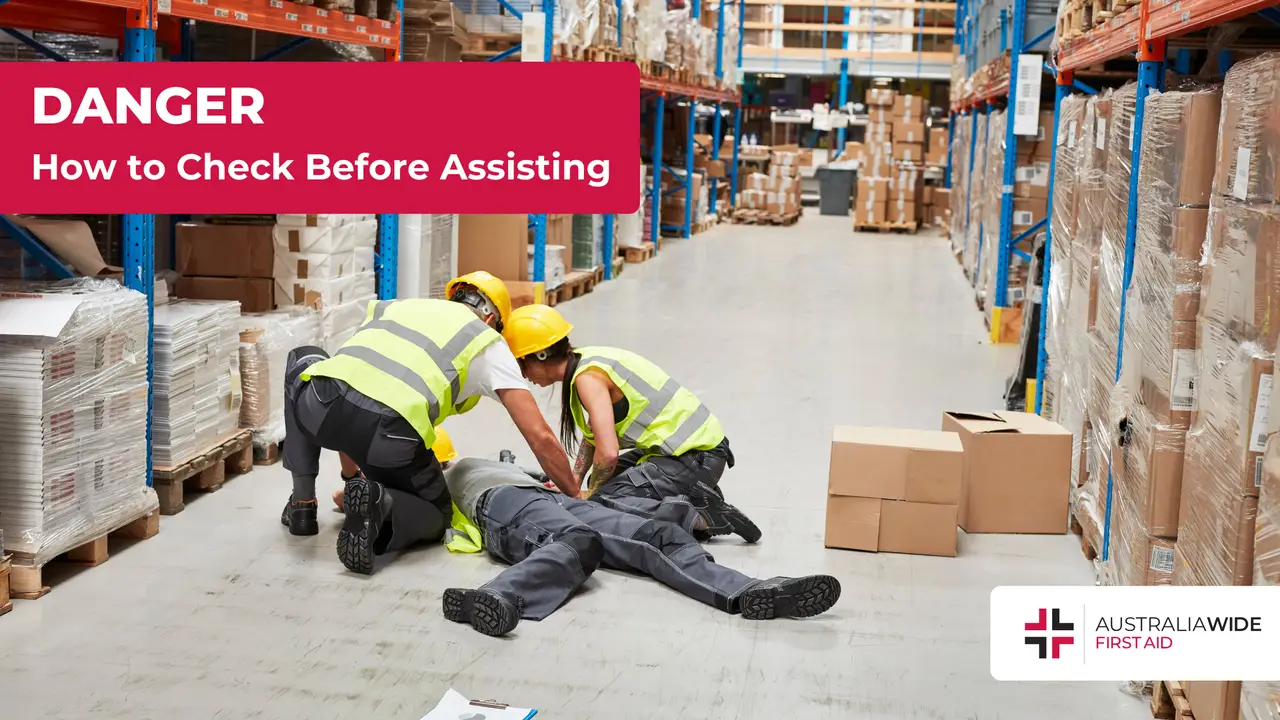

When coming across someone who appears unconscious, injured, or in need of medical help, it’s instinctive to rush to their aid.
However, your safety is just as much of a priority.
Ensuring the scene is safe before assisting the person is not only a fundamental principle of first aid but also critical to preventing further harm.
You cannot provide aid for someone else if you get yourself injured in the process.
This approach follows the DRSABCD action plan—D for Danger being the critical first step. Understanding and practicing this protocol can save lives while keeping everyone involved safe.
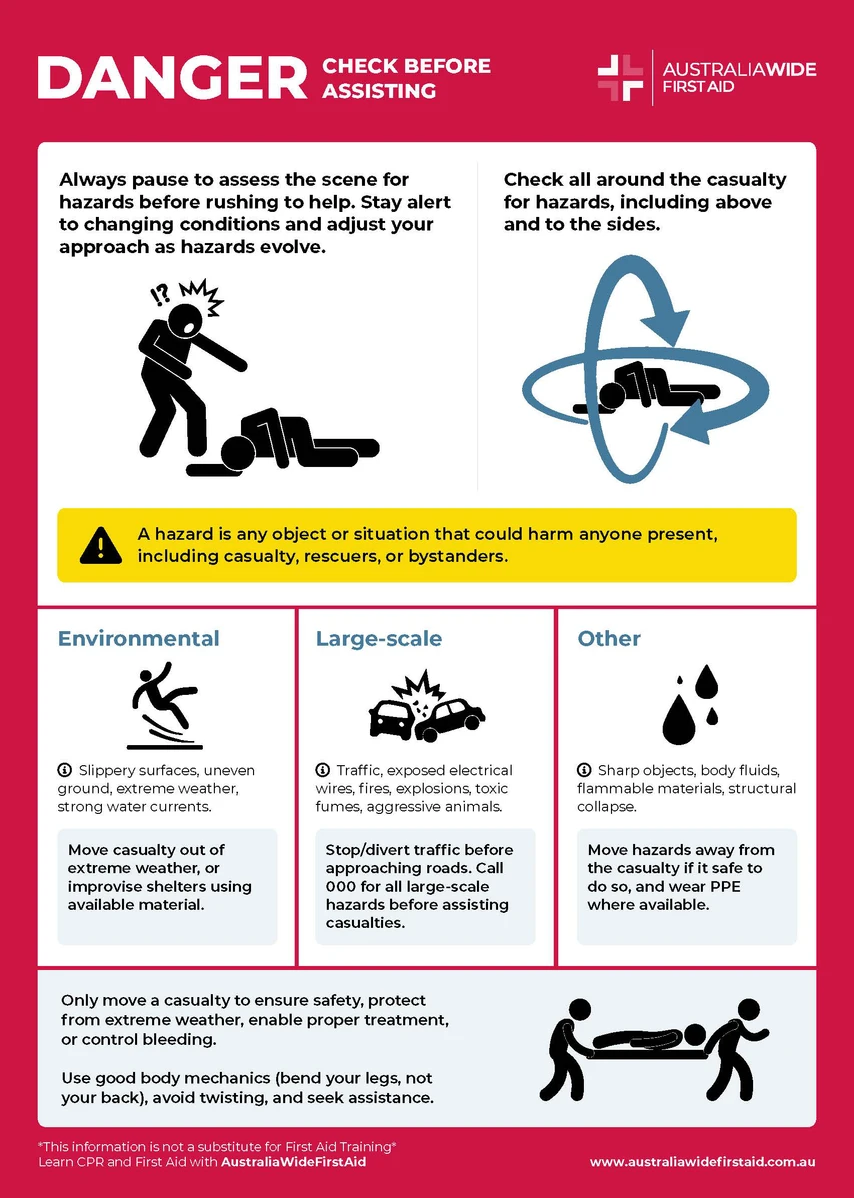
Before rushing in, take a moment to assess the scene. Look for potential hazards that could endanger you, the casualty, or others.
This means looking not only at the direct vicinity of the casualty, but also in the surrounding area.
Look around the casualty’s body, look to the sides, even look up. There may be unnoticed hazards above your head.
It is important to leave dangerous situations to emergency personnel with the right training and equipment to manage. Risking your own safety could increase the number of casualties. Other situations may permit the removal of the hazard or the removal of the casualty from the hazard.
A hazard is any object or situation which could cause harm to anyone on the scene. This includes the casualty, yourself, and any other people nearby.
It is crucial to account for hazards when responding to an emergency. If you don’t, you risk making the situation more dangerous for everyone involved, including any first responders who may arrive at the scene after you.
Large-scale Hazards
Bigger hazards are often easier to notice before you attend to the person. They may require attention before you can approach.
For example, is the incident near a busy road? Ensure traffic is stopped or diverted before approaching. Ensure there is another person who can actively divert traffic, as you may be hard to notice crouched down assisting the casualty.
Keep a keen eye for electrical wires, for example from fallen power poles or damaged buildings. If electrical wires are exposed or sparking, do not approach until the power is shut off. You may be able to do this yourself in the case of an incident at a house, by turning off the power through the electricity box. However, other scenarios will require attention by professionals to turn the power off.
If there’s a risk of fire, explosion, or inhaling toxic fumes, maintain a safe distance and call emergency services immediately.
Also be aware of any aggressive animals or people. If the casualty is in a volatile situation, wait for law enforcement or animal control to secure the area.
Environmental Hazards
Natural elements can pose risks, especially in wilderness areas and during weather events.
Be cautious of the surfaces in the area. Ice, water, loose gravel, and sand can all be extremely slippery and may result in further injuries. Uneven ground should also be taken into consideration before moving closer to the casualty. Extreme weather may seem like an obvious hazard, but each type of weather event poses its own risks. If necessary, you may need to erect a shelter for the casualty and yourself to remain under until professional help arrives. This could be as simple as holding a jacket over your heads, or covering any wounds to prevent exposure.
Even on clear, sunny days there is a risk of sunburn, heatstroke or sunstroke to both yourself and the casualty.
Ensure you’re not putting yourself at risk of hypothermia, heatstroke, or lightning strikes.
If the person is in or near water, assess the risk of drowning or strong currents. Do not enter moving water unless you are trained to do so.
Other Hazards
The list of potential hazards is technically endless. Use your best judgement and adapt to the scenario appropriately. If at any point it becomes dangerous, you must care for your own safety.
Other hazards can include:
Once the area appears safe, determine if the casualty is still in danger.
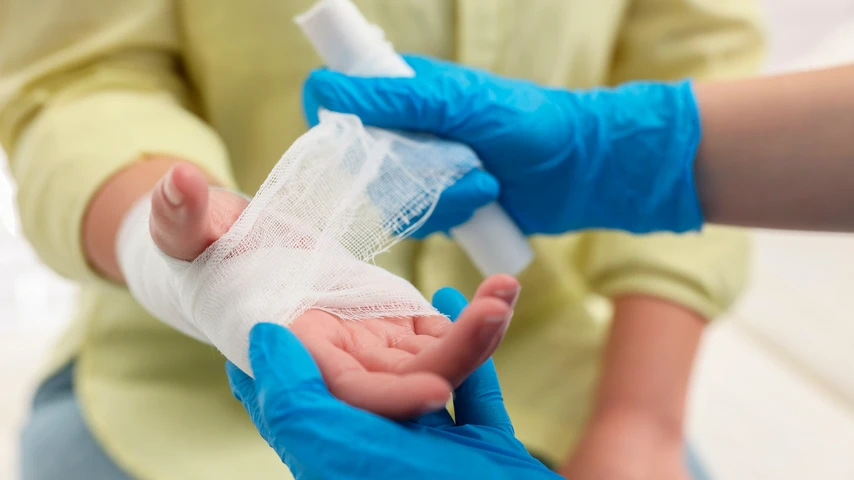
Your safety is paramount, and that includes while assisting the casualty. The use of PPE, even improvised, can protect you for harm.
Wear protective gloves if available to avoid exposure to bodily fluids and use a pocket mask or face shield if performing CPR.
Use barriers like blankets or clothing to prevent direct contact with blood, broken glass, or other hazards.
If the environment is still partially hazardous, keep your distance and call emergency services for professional assistance.
If the area is too hazardous to allow the casualty to stay and it’s safe to move the casualty without risking further injury, gently relocate them to a safer area.
If moving them isn’t possible, do your best to shield them from ongoing dangers while waiting for emergency services.
Remove any smaller hazards from the area around the casualty, such as loose objects, branches, etc. You may need the room to roll them into the recovery position, apply bandages, or perform CPR.
If it is raining or particularly sunny, providing cover can help in reducing the risks. Have another person hold a cover over you while you assist, if possible.
Once the scene is secure, call emergency services to report the incident. Provide detailed information about the location, nature of the injury, and any dangers you observed.
Follow advice for treating the casualty, and answer all questions as openly and honestly as you can. This allows for the first responders to know what they are walking into, and how best to assist when they arrive.
Moving a casualty, especially an unconscious casualty, is difficult and best left to trained and equipped emergency personnel.
A rescuer should move a person when needed to:
If a casualty needs to be moved before an ambulance arrives, get assistance from bystanders, take extreme care, and use good manual handling practices.
Provided they are not at further risk, you should check casualties in the position in which you find them. In the event you are unable to check a casualty in the position they are in, gently roll them onto their back, supporting the head and neck during movement.
Some basic manual handling techniques:
Situations can change quickly. Stay alert to evolving hazards and be prepared to adjust your approach as needed.
Taking a moment to assess danger ensures the safety of both the rescuer and the casualty. It might seem counterintuitive to delay help, but acting cautiously can prevent additional injuries or complications. Remember: you can’t assist effectively if you become a victim yourself.
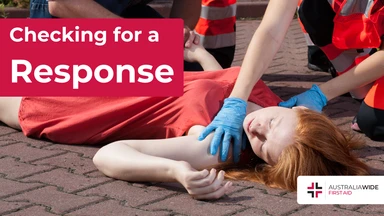
March 18, 2025
Checking for a response is critical before proceeding with any first aid assistance. Knowing if a casualty is conscious or not allows you to use the appropriate techniques. Using gentle but firm responsiveness techniques, such as the COWS method, mean you can check for a response while remaining respectful to the casualty.

February 25, 2025
When coming across someone who appears unconscious, injured, or in need of medical help, it’s instinctive to rush to their aid. Ensuring the scene is safe before assisting the person is not only a fundamental principle of first aid but also critical to preventing further harm.
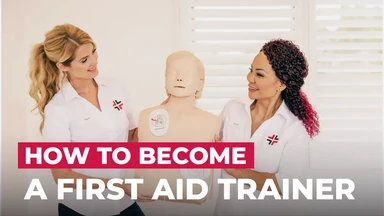
March 8, 2024
Becoming a first aid trainer in Australia is a rewarding and impactful career choice that allows individuals to make a significant contribution to the community by imparting life-saving skills.